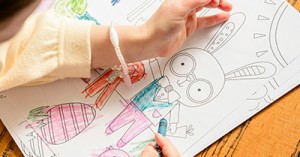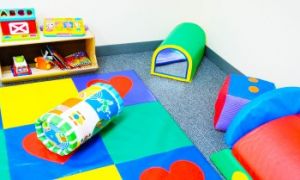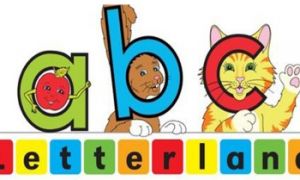Waldorf education is a unique and holistic approach to child development, founded by Rudolf Steiner in 1919. The following article provides a Guide To Waldorf Education, The Waldorf Environment, How To Set Up The Environment According To Waldorf, The Waldorf Curriculum, Teaching Methods and more.
Guide To Waldorf Education
Waldorf education focuses on nurturing the intellectual, artistic, and social growth of children through a balanced and creative curriculum. Here's a brief guide to Waldorf education:
Philosophy and Approach
-
Holistic Development: Waldorf education emphasizes the development of the whole child—intellectually, artistically, and socially.
-
Stages of Development: The curriculum is divided into three main stages: Early Childhood (Birth to 7 years), Middle Childhood (7 to 14 years), and Adolescence (14 to 18 years).
-
Anthroposophy: Rooted in Steiner's philosophy of anthroposophy, which views human development as a three-step process: imitation and play in early childhood, artistic expression and social learning in middle childhood, and critical thinking and empathy in adolescence.
Curriculum and Teaching Methodology
-
Creative Learning: Waldorf education integrates academic, artistic, and practical learning. Subjects are introduced in an age-appropriate manner, with a strong emphasis on oral storytelling, hands-on activities, and real-world applications.
-
Delayed Academics: Reading and writing are introduced gradually, with a focus on oral storytelling in the early years. Mathematics is taught using hands-on materials, and science education is experiential.
-
Teacher Continuity: Waldorf teachers typically stay with the same class for several years, fostering deep, meaningful relationships with their students.
Comparison with Other Education Systems
-
Delayed Introduction of Academics: Unlike many other education systems, Waldorf education delays the introduction of formal academics to allow for creative and social development.
-
Emphasis on Arts: Waldorf education places a strong emphasis on the arts, including painting, music, drama, and handwork.
-
Group Work: Waldorf education focuses more on group work and social learning compared to individual learning.
Long-Term Outcomes
-
Creative and Analytical Thinking: Research shows that Waldorf graduates often excel in creative and analytical thinking, problem-solving, and social intelligence.
-
Community Involvement: Waldorf education encourages community involvement and fosters a sense of social responsibility.
The Waldorf Environment
1. Natural Materials
-
Wood, Wool, Silk: Use natural materials for toys and classroom furnishings to create a warm, calming atmosphere.
-
Example: Wooden blocks, silk scarves, and woolen dolls for play.
2. Aesthetic Appeal
-
Soft Colors and Textures: Classrooms are often decorated in soft, pastel colors with natural light and gentle textures to create a peaceful environment.
-
Example: Walls painted in calming tones like soft peach or light blue, with curtains made of natural fabrics.
3. Connection to Nature
-
Outdoor Play: Emphasize outdoor activities and the use of natural elements in play and learning.
-
Example: Regular nature walks, gardening, and the inclusion of plants and natural objects in the classroom.
4. Seasonal Themes
-
Celebration of Seasons: Integrate the changing seasons into the curriculum and classroom decor.
-
Example: Seasonal nature tables displaying natural items like leaves, flowers, and stones, as well as seasonal crafts and activities.
5. Rhythmic Structure
-
Daily and Weekly Rhythms: Establish a predictable daily and weekly schedule that includes periods of active play, focused learning, and quiet reflection.
-
Example: A consistent routine with activities like circle time, story time, and outdoor play happening at the same time each day.
6. Artistic Expression
-
Arts and Crafts: Encourage artistic activities such as painting, drawing, and handwork.
-
Example: Daily opportunities for children to engage in creative projects using materials like beeswax, watercolor paints, and natural dyes.
7. Simple and Open-Ended Toys
-
Imaginative Play: Provide toys that encourage imagination and creativity.
-
Example: Simple dolls, wooden animals, and building blocks that can be used in various ways.
8. Communal Spaces
-
Sense of Community: Create spaces that foster a sense of community and cooperation among children.
-
Example: A cozy reading corner with cushions and blankets where children can gather for stories and quiet time together.
9. Personalized Spaces
-
Children's Artwork: Display children's artwork and creations around the classroom to give them a sense of ownership and pride.
-
Example: An art wall where children can hang their paintings and drawings.
10. Integration of Practical Skills
-
Real-Life Activities: Incorporate practical life skills into the daily routine.
-
Example: Activities like baking bread, sewing, and cleaning up, which help children develop fine motor skills and a sense of responsibility.
A Waldorf environment is thoughtfully curated to support the development of the whole child, fostering creativity, imagination, and a deep connection with the natural world.
How To Set Up The Environment According To Waldorf
1. Natural Materials
-
Use Natural Elements: Incorporate wood, silk, wool, and other natural materials in the classroom.
-
Example: Wooden furniture, silk scarves for imaginative play, and woolen rugs to create a warm and inviting atmosphere.
2. Soft Colors and Aesthetics
-
Calming Colors: Choose soft, natural colors for walls and decor to create a peaceful environment.
-
Example: Pastel shades like soft peach, light blue, and gentle green for walls and fabrics.
3. Connection to Nature
-
Bring Nature Indoors: Include plants, natural light, and elements from nature in the classroom.
-
Example: Potted plants, a nature table with seasonal items, and plenty of windows to allow natural light.
4. Seasonal Decorations
-
Celebrate the Seasons: Reflect the changing seasons in your decor and activities.
-
Example: Seasonal nature tables with items like leaves, flowers, stones, and seasonal crafts created by the children.
5. Rhythmic Structure
-
Daily and Weekly Rhythms: Establish a predictable routine that includes periods of active play, focused learning, and quiet reflection.
-
Example: Consistent schedules with activities like circle time, storytime, and outdoor play at the same time each day.
6. Artistic Expression
-
Encourage Creativity: Provide materials and opportunities for artistic activities such as painting, drawing, and handwork.
-
Example: Daily access to watercolors, crayons, and modeling beeswax for creative projects.
7. Open-Ended Toys
-
Stimulate Imagination: Use simple, open-ended toys that encourage imaginative play.
-
Example: Wooden blocks, silk scarves, and woolen dolls that can be used in various ways.
8. Communal Spaces
-
Foster Community: Create cozy areas for group activities and encourage collaboration and social interaction.
-
Example: A reading corner with cushions and blankets, and a communal table for shared meals and activities.
9. Personalized Spaces
-
Display Children's Work: Showcase children's artwork and creations around the classroom to give them a sense of pride and ownership.
-
Example: An art wall where children's paintings, drawings, and crafts are displayed with captions or labels.
10. Integration of Practical Skills
-
Real-Life Activities: Incorporate practical life skills into the daily routine.
-
Example: Activities like baking bread, sewing, and gardening to develop fine motor skills and a sense of responsibility.
By following these steps, you can create a Waldorf-inspired environment that supports the holistic development of children, fostering creativity, imagination, and a deep connection with the natural world. ?
The Waldorf Curriculum
The Waldorf curriculum is a holistic educational approach designed to nurture the intellectual, artistic, and practical skills of children at various stages of their development. Developed by Rudolf Steiner, the curriculum is structured to address the needs of the "whole child"—body, mind, and spirit. Here’s an overview of the Waldorf curriculum across different age groups:
Early Childhood (Birth to 7 Years)
-
Focus: Imagination, play, and imitation.
-
Activities:
-
Creative Play: Open-ended toys like wooden blocks, silk scarves, and natural materials.
-
Storytelling and Puppetry: Oral storytelling, puppet shows, and circle time to foster language development and imagination.
-
Arts and Crafts: Simple artistic activities such as watercolor painting, crayon drawing, and handcrafts.
-
Outdoor Play: Daily outdoor activities to connect with nature and promote physical development.
-
Seasonal Celebrations: Festivals and activities aligned with the changing seasons to create a sense of rhythm and connection to the natural world.
-
Grades 1 to 8 (7 to 14 Years)
-
Focus: Artistic expression, hands-on learning, and social development.
-
Subjects:
-
Language Arts: Emphasis on oral storytelling, reading, writing, and dramatic arts.
-
Mathematics: Taught through practical and artistic activities, including form drawing and geometry.
-
Science: Experiential learning through observation, nature studies, and experiments.
-
History and Geography: Presented through storytelling, biographies, and cultural studies.
-
Foreign Languages: Introduction to one or more foreign languages through songs, games, and cultural activities.
-
Arts and Crafts: Regular practice of visual arts, music, drama, and handwork (e.g., knitting, sewing, woodworking).
-
Physical Education: Movement games, eurythmy (a form of expressive movement), and sports.
-
High School (14 to 18 Years)
-
Focus: Critical thinking, ethical development, and specialized skills.
-
Subjects:
-
Humanities: In-depth study of literature, history, philosophy, and social sciences.
-
Sciences: Advanced courses in biology, chemistry, physics, and environmental science, with a focus on independent research and experiments.
-
Mathematics: Higher-level math, including algebra, geometry, trigonometry, and calculus.
-
Arts: Continued practice in visual arts, music, drama, and crafts, with opportunities for specialized artistic pursuits.
-
Practical Skills: Workshops and vocational training in areas such as agriculture, carpentry, metalwork, and textiles.
-
Community Service: Projects and activities that encourage social responsibility and community involvement.
-
Foreign Languages: Continued study of foreign languages with an emphasis on fluency and cultural understanding.
-
Outdoor Education: Expeditions and nature trips to develop survival skills, environmental awareness, and teamwork.
-
Pedagogical Principles
-
Child Development: The curriculum is designed to align with the developmental stages of children, addressing their physical, emotional, and cognitive needs at each stage.
-
Integration of Arts: Artistic activities are integrated into all subjects to enhance creativity and emotional expression.
-
Teacher Continuity: Ideally, teachers stay with the same class for several years, fostering deep relationships and understanding of each child’s needs.
-
Seasonal Rhythms: The curriculum follows the rhythms of the year, incorporating seasonal themes and festivals.
Example Activities
-
Early Childhood: Building a nature table with seasonal items, baking bread, and singing seasonal songs.
-
Grades 1 to 8: Creating main lesson books (handwritten and illustrated subject notebooks), performing a class play, and learning a traditional craft like knitting.
-
High School: Conducting scientific experiments, writing and presenting research papers, and participating in community service projects.
The Waldorf curriculum emphasizes the importance of imagination, creativity, and holistic learning, aiming to develop well-rounded individuals who are capable of thinking critically and acting ethically in the world.
Teaching Methods
Waldorf education employs unique and holistic teaching methods designed to foster a well-rounded development in children. Here's an overview of the core teaching methods used in Waldorf education:
1. Storytelling
-
Method: Oral storytelling is a central technique in Waldorf education, used to teach everything from history to mathematics.
-
Example: Teachers might use stories to introduce letters and numbers to young children, making learning more engaging and meaningful.
2. Integration of Arts
-
Method: Arts are integrated into all subjects to enhance creativity and emotional expression.
-
Example: Students might illustrate their main lesson books (handwritten and illustrated notebooks) with drawings related to the topic they are studying.
3. Hands-On Learning
-
Method: Emphasis on experiential learning through practical activities and hands-on experiences.
-
Example: Science lessons might include outdoor experiments and nature walks to observe and learn about plants and animals.
4. Rhythmic Learning
-
Method: Establishing a rhythm in the daily schedule to provide structure and predictability.
-
Example: Each day includes a balance of academic work, artistic activities, physical movement, and free play.
5. Main Lesson Blocks
-
Method: Subjects are taught in blocks of three to four weeks, allowing for deep, immersive learning.
-
Example: A main lesson block on ancient civilizations might involve reading myths, creating related art projects, and discussing historical contexts.
6. Eurythmy
-
Method: A movement art unique to Waldorf education that integrates physical movement with learning.
-
Example: Children perform movements to music and poetry, which helps develop coordination, concentration, and a sense of rhythm.
7. Delayed Academics
-
Method: Formal academics, like reading and writing, are introduced gradually, allowing for a strong foundation in play and imagination first.
-
Example: In early childhood, much emphasis is placed on imaginative play, oral language development, and artistic activities before formal reading instruction begins around age seven.
8. Teacher Continuity
-
Method: Teachers often stay with the same class for several years, fostering strong, stable relationships.
-
Example: A class teacher might move from grade to grade with the same group of students from first through eighth grade, building deep connections and continuity in learning.
9. Seasonal and Cultural Integration
-
Method: The curriculum reflects seasonal changes and cultural traditions.
-
Example: Celebrating seasonal festivals with activities like crafting lanterns for a lantern walk in autumn or planting seeds in spring.
10. Collaborative Learning
-
Method: Encourages teamwork and social learning through group activities and projects.
-
Example: Students might work together to create a class mural or perform a play based on a story they are studying.
11. Practical Life Skills
-
Method: Incorporation of practical activities that teach life skills.
-
Example: Activities like cooking, gardening, and handcrafts (e.g., knitting, woodworking) are regular parts of the curriculum.
12. Limited Use of Technology
-
Method: Minimal use of technology in early years to encourage direct experiences and creativity.
-
Example: Instead of computers, young children use physical materials like blocks and natural objects for learning and play.
The Waldorf teaching methods aim to educate the whole child by integrating intellectual, artistic, and practical elements into a cohesive and enriching learning experience.
Pros and Cons
Pros
-
Holistic Development:
-
Pro: Focuses on nurturing the whole child—intellectually, emotionally, socially, and physically.
-
Example: Integrates arts, music, and physical education into the curriculum to promote balanced development.
-
-
Creativity and Imagination:
-
Pro: Encourages creative thinking and imaginative play, fostering innovation and problem-solving skills.
-
Example: Children engage in activities like storytelling, puppetry, and arts and crafts.
-
-
Strong Teacher-Student Relationships:
-
Pro: Teachers often stay with the same class for multiple years, building deep, meaningful relationships.
-
Example: This continuity allows teachers to understand each child’s individual needs and support their growth.
-
-
Emphasis on Nature and Environment:
-
Pro: Connects children with the natural world through outdoor play and nature-based learning.
-
Example: Regular nature walks and gardening activities help children appreciate and understand the environment.
-
-
Developmentally Appropriate Curriculum:
-
Pro: Tailors the curriculum to align with the developmental stages of children.
-
Example: Delays formal academics to allow for imaginative play and hands-on learning in early childhood.
-
-
Community and Social Skills:
-
Pro: Promotes a strong sense of community and cooperation among students.
-
Example: Group activities and collaborative projects encourage teamwork and social interaction.
-
Cons
-
Delayed Introduction of Academics:
-
Con: The delayed introduction of reading and writing may concern some parents who prefer earlier academic instruction.
-
Example: Formal reading instruction typically begins around age seven, which may seem late to some.
-
-
Limited Use of Technology:
-
Con: The minimal use of technology may leave children less familiar with digital tools compared to peers in other educational systems.
-
Example: Computers and tablets are generally not used in early childhood classrooms.
-
-
Alternative Approach:
-
Con: The unconventional methods and philosophy may not align with every family’s educational values or goals.
-
Example: Some parents may prefer a more traditional or academically focused approach to education.
-
-
Teacher Training and Quality:
-
Con: The quality of education can vary depending on the training and experience of the teachers.
-
Example: Waldorf teachers require specialized training, and inconsistency in teacher preparation can affect the implementation of the curriculum.
-
-
Cost and Accessibility:
-
Con: Waldorf schools are often private and can be expensive, limiting accessibility for some families.
-
Example: Tuition fees and additional costs for materials and activities can be a barrier for some.
-
-
Adaptation to Standardized Testing:
-
Con: The Waldorf approach may not align well with standardized testing and performance metrics used in public education systems.
-
Example: Students transitioning to traditional schools may need time to adjust to different assessment methods and academic expectations.
-
Waldorf education offers a unique, holistic approach to learning that many families find beneficial, but it also has its challenges.
Further Reading
Pedagogical Approaches In Early Childhood
Child Theorists and Their Theories in Practice
Reference:
Waldorf Education Explained, Learn Lever







 As an Educator in Australia, your pay rate falls under the Children’s Services Award 2010. This award states the minimum amount that an employer can
As an Educator in Australia, your pay rate falls under the Children’s Services Award 2010. This award states the minimum amount that an employer can When working as a qualified Early Childhood Teacher (with a university degree) within a service, your rate of pay will come from the Educational Services
When working as a qualified Early Childhood Teacher (with a university degree) within a service, your rate of pay will come from the Educational Services When working as a Diploma Qualified Educator your pay rate is from the Children's Services Award 2010. This Award states your minimum rate of pay
When working as a Diploma Qualified Educator your pay rate is from the Children's Services Award 2010. This Award states your minimum rate of pay When working as a Cert 3 Qualified Educator, your pay rate is from the Children's Services Award 2010. This Award states your minimum rate of
When working as a Cert 3 Qualified Educator, your pay rate is from the Children's Services Award 2010. This Award states your minimum rate of Educational Leaders play a crucial role in their early childhood service by ensuring that the educational program aligns with best practices and supports the holistic
Educational Leaders play a crucial role in their early childhood service by ensuring that the educational program aligns with best practices and supports the holistic In early childhood education and care, ratios are more than a technicality—they are a frontline safeguard. Every child deserves responsive supervision, emotional connection, and developmental
In early childhood education and care, ratios are more than a technicality—they are a frontline safeguard. Every child deserves responsive supervision, emotional connection, and developmental With the new national child safety reforms kicking in on 1 September 2025, early childhood services like yours have a real opportunity to lead the
With the new national child safety reforms kicking in on 1 September 2025, early childhood services like yours have a real opportunity to lead the Here’s a comprehensive Mobile Phone and Smart Watch Policy tailored for early childhood education and care (ECEC) services in Australia, aligned with the latest 2025
Here’s a comprehensive Mobile Phone and Smart Watch Policy tailored for early childhood education and care (ECEC) services in Australia, aligned with the latest 2025 The Sea of Fish Challenge is a national initiative that invites children, educators, families, and communities to create and display fish artworks as a symbol
The Sea of Fish Challenge is a national initiative that invites children, educators, families, and communities to create and display fish artworks as a symbol Across the early childhood education and care sector, educators are sounding the alarm: current staffing ratios are insufficient to deliver safe, meaningful, and developmentally appropriate
Across the early childhood education and care sector, educators are sounding the alarm: current staffing ratios are insufficient to deliver safe, meaningful, and developmentally appropriate


